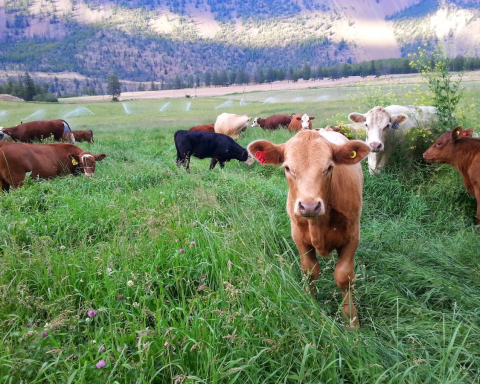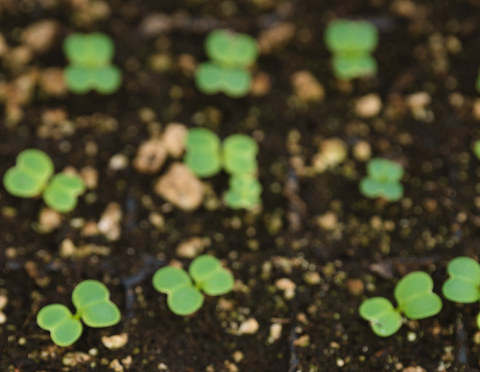Living in Harmony with Nature
Marjorie Harris
“Biodiversity is biosecurity.” – Paul Stamets
“Living in harmony with Nature by 2050” is the world’s new collective relationship goal. This is an invitation to a new concept of relationship between all of humanity and all of Nature’s ecological biodiversity, both terrestrial and aquatic. This global vision, along with target timeframes, was established at the 2010 United Nations Convention on Biodiversity (CBD) held in Aichi Prefecture, Japan.
The new relationship is asking humanity to live consciously aware, choosing harmony with the biological diversity that powers the planet’s life-support system, including the air we breathe, the water we drink, the food we eat, the beauty we share. To live each day in the awareness of our common heritage, to feel the rhythmic pulse of Nature’s heartbeat synchronizing in our own chests. The pandemic has reminded us all that humanity is but one strand in the scared living web of life on this planet. We are not exempt from our common destiny.
Rachel Carson wrote in reflection on our spiritual bond with Nature: “And so, there is in us a deeply seated response to the natural universe, which is part of our humanity.” Humanity’s enlightened partnership with Nature’s intricately interwoven globally interlinked terrestrial and aquatic ecosystems is to be achieved peacefully, harmoniously, and sustainably.
Heȟáka Sápa, commonly known as Nicholas Black Elk, a wičháša wakȟáŋ, or medicine man of the Oglala Lakota, speaks to life’s oneness: “The first peace, which is the most important, is that which comes within the souls of people when they realize their relationship, their oneness, with the universe and all its powers, and when they realize that at the center of the universe dwells Wakan-Tanka, and that this centre is really everywhere, it is within each of us.”
The AICHI pledge taken by more than 200 countries in 2010 defined 20 ecological biodiversity target objectives to be reached by 2020. AICHI Biodiversity Target 11 is that “at least 17 percent of terrestrial and inland water, and 10 percent of coastal and marine areas, especially areas of particular importance for biodiversity and ecosystem services, are conserved through effectively and equitably managed, ecologically representative, and well connected systems of protected areas and other effective area-based conservation measures, and integrated into the wider landscapes and seascapes.”
Well, it’s 2020, and this September the UN Convention on Biodiversity released a first-decade progress summary. The report concluded that not one of the 200 signatory countries completed any of the 20 listed ecological-biodiversity targets. Progress was stalled across all levels, from governmental biodiversity framework planning and policy development, to on-the-ground implementation. As the planet’s ecosystems plunge headlong into the sixth mass extinction of species, and as biodiversity is being lost at an unprecedented rate, this outcome seems dismal.
According to the World Wildlife Fund, “we’ve caused a 60 percent decline in wildlife populations since 1970, through habitat loss and degradation, overfishing, and overhunting. Guess what’s also happened since 1970? We’ve added more than 4 billion people to the human population. In 1970, there were 3.7 billion people on the planet. Today there are 7.8 billion.”
The words of Rachel Carson once again resonate: “The human race is challenged more than ever before to demonstrate our mastery, not over nature but of ourselves.”
In a recent interview, Elizabeth Maruma Mrema, executive secretary of the UN Convention on Biodiversity, said, “Globally, lessons have been learned. COVID-19 has made us even more aware, giving us a stark reminder of our unsustainable relationship to nature. I hope we will not repeat mistakes of the past…or we will all perish”
Our global consciousness is young. It was only on August 23, 1966 that we saw our home planet for the first time. “Viewed from the distance of the moon, the astonishing thing about the Earth, catching the breath, is that it is alive… Aloft, floating free beneath the moist, gleaming membrane of bright blue sky, is the Earth, the only exuberant thing in this part of the cosmos,” describes Dr. Lewis Thomas in his book, The Lives of a Cell: Notes of a Biology Watcher.
Dr. Thomas goes on to say, “But it is illusion to think that there is anything fragile about the life of the Earth; surely this is the toughest membrane imaginable in the universe, opaque to probability, impermeable to death. We are the delicate part, transient and vulnerable as cilia. Nor is it a new thing for man to invent an existence the he imagines to be above the rest of life; this has been his most consistent intellectual exertion down through the millennia. As illusion, it has never worked out to his satisfaction in the past, any more than it does today. Man is embedded in nature.”
As we continue on this collective journey exploring our new relationship with all living things, China will be hosting the fifteenth session of the Conference of the Parties (COP 15) to the Convention on Biological Diversity (CBD). As an invitational message to us all, Li Ganjie, Minister of Ecology and Environment of the People’s Republic of China, says:
“We only have one earth, on which we all live and upon which we all depend. Biodiversity is the foundation for human survival and development. Protecting global biodiversity is in the interest of every one of us. It is an important part of the vision of building a community of shared future for mankind and also the mission of the Convention on Biological Diversity.
“The Action Agenda is both a challenge and a tool for all those who are committed to safeguarding life on Earth. With this initiative, we are calling on Parties to redouble their efforts to halt biodiversity loss.
“The Action Agenda online platform will allow us and our partners to measure progress on biodiversity goals, assess the impact and identify gaps. This is urgently needed as we work to lay the foundation for a highly ambitious, and yet achievable, global biodiversity framework for the next decade.”
Living (on) planet Earth is our common biological heritage; may we know together, as Nicholas Black Elk suggests, “The first peace, which is the most important, is that which comes within the souls of people when they realize their relationship, their oneness, with the universe and all its powers.”
Marjorie Harris, IOIA VO and concerned organophyte.







